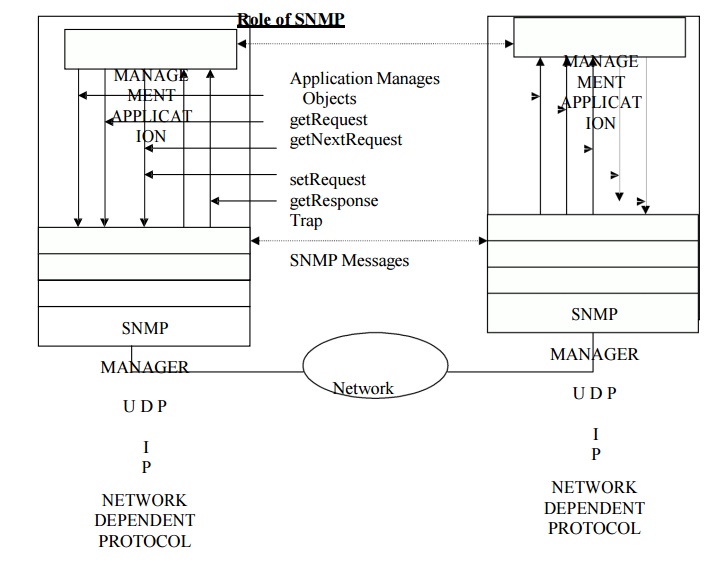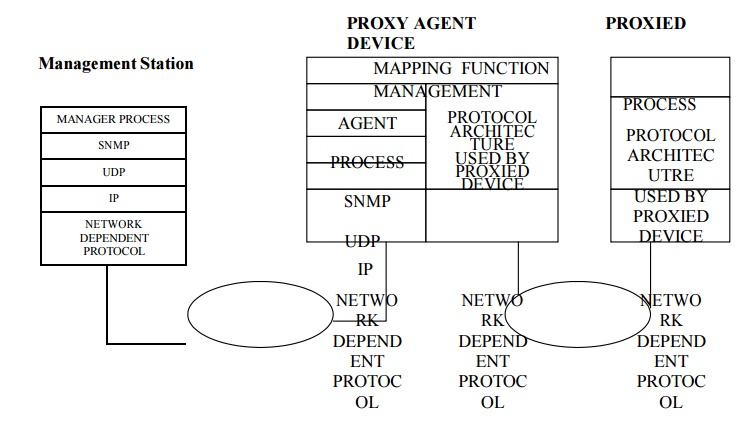Chapter: Network Programming and Management : Simple Network Management
Configuration of SNMP
CONFIGURATION OF SNMP
For a stand alone management station, a manager
process controls access to a central MIB and provides interface to the network
manager. The manager process achieves network management by using SNMP which is
implemented on top of UDP, IP and the relevant network dependent protocol
(Ethernet, FDDI, and X.25).
Each agent implements SNMP, UDP and IP. For an
agent device that supports other application such as FTP, both TCP and UDP are
required. Shaded area represents the support provided to network management
functions.
Following figure provides further elaborate
look at the protocol context on SNMP. From management station three types of
SNMP messages are issued on behalf of a management application : getRequest,
getNextRequest, setRequest. The first two are variation of get function. All
the three messages are acknowledged by the agent in the form of getResponse
message. In addition a agent may issue a tap message in response to an event
that affects the MIB and the underlying managed resources.
As SNMP relies on UDP, SNMP by itself is
connectionless protocol. No ongoing connections are maintained between a
management station and its agents. Instead, each exchange is a separate
transaction between a management station and an agent.

Trap Directed Polling :
If a
management station is responsible for a large number of agents and if each agent
maintains a large number of objects, then it becomes difficult for the
management station to regularly poll agents for all of their readable data.
Instead SNMP and associated MIB are designed to encourage the manager to use a
technique referred to as trap directed
polling.
In this
at initialization time, and at frequent intervals (Once a day ) a management
station can poll all of the agents it knows for some key information such as
interface characteristics and for some baseline performance statistics (average
number of packets sent) and received over a given period of time. Once this
baseline is established, the management station refrains from polling. However
any unusual incident is notified by the each agent for example agent crashing
and rebooting, link failure, overload condition etc. These events are
communicated in SNMP messages known as traps.
Proxies: The
use of SNMP requires that all agents, as well as management stations must
support a common protocol suite,
such as UDP and IP. This limits direct management to such devices such as some
bridges , modems that are not part of TCP / IP protocol suit. Similarly a
number of PCs, Programmable controllers that do not implement TCP/ IP for which
it is not desirable to add SNMP, agent logic and MIB maintenance etc.
To
accommodate devices that do not implement SNMP, the concept of proxy was
developed. In this scheme an SNMP agent acts as a proxy for one or more other
devices. This is shown in the following figure.

Above figure shows that management stations
sends queries concerning a device to its proxy agent. The proxy agent converts
each query into the management protocol that the device is using. When the
agent receives a reply to a query, it passes that reply back to the management
station. Similarly, if an event notification of some sort from which the device
is transmitted to the proxy, the proxy sends that on to the management station
in the form of trap message.
Related Topics